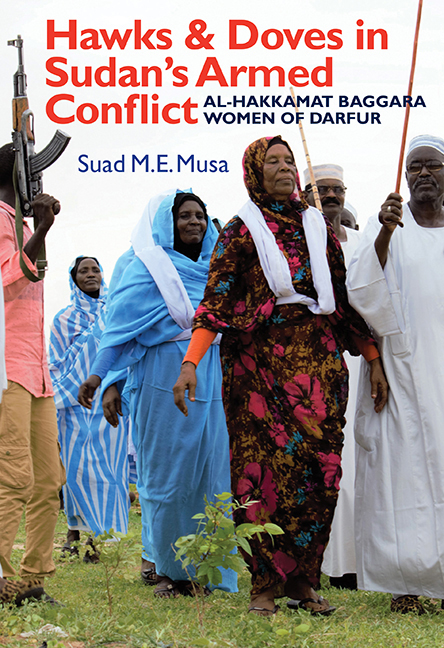Book contents
- Frontmatter
- Dedication
- Contents
- List of Illustrations
- Acknowledgements
- Glossary
- Abbreviations
- Note on Transliteration
- Introduction: Conflict in Darfur and the Role of Rural Darfuri Women
- 1 Ethnicity and Administration in Darfur
- 2 Conflict in Darfur: Causes and Implications
- 3 Al-Hakkamat Women
- 4 Local Inter-ethnic Conflicts
- 5 Government and Racial Assimilation of Ethnic Groups
- 6 Liaising with Government
- 7 New Duties and Obligations
- 8 Roles in Peace and Reconciliation
- 9 Urban Identity and Social Change
- 10 Conclusion
- Appendix: Darfur Chronology, 1445–2017
- Bibliography
- Index
- Eastern African Studies
1 - Ethnicity and Administration in Darfur
Published online by Cambridge University Press: 12 October 2019
- Frontmatter
- Dedication
- Contents
- List of Illustrations
- Acknowledgements
- Glossary
- Abbreviations
- Note on Transliteration
- Introduction: Conflict in Darfur and the Role of Rural Darfuri Women
- 1 Ethnicity and Administration in Darfur
- 2 Conflict in Darfur: Causes and Implications
- 3 Al-Hakkamat Women
- 4 Local Inter-ethnic Conflicts
- 5 Government and Racial Assimilation of Ethnic Groups
- 6 Liaising with Government
- 7 New Duties and Obligations
- 8 Roles in Peace and Reconciliation
- 9 Urban Identity and Social Change
- 10 Conclusion
- Appendix: Darfur Chronology, 1445–2017
- Bibliography
- Index
- Eastern African Studies
Summary
Ethnicity and administration in Sudan are complex and interwoven issues and they form the foundations of its socio-economic and political power relationships. The ethnic composition in Sudan is mixed and diverse and its administration has been influenced by the historical approaches of various ruling systems of the kingdoms that formed Sudan and the colonial and national regimes that have ruled the country. Darfur society is representative of the wider society in Sudan, but it has unique characteristics in its ethnic composition and administrative system. The latter is an extension of the Fur sultanate's administration, in which tribes and tribal territories were significant pillars. This chapter outlines the historical complexity around identity in the country, the political approaches based on ethnic and racial discrimination that were embraced by the rulers who have governed Sudan, and how these have been manifested in the administration and ethnic relationships in Darfur since it was annexed to Sudan in 1917.
GEOGRAPHY AND POPULATION
Darfur (DarFur – the homeland of the Fur tribe) was founded as an independent Fur sultanate (1445–1916). It was annexed to Sudan in 1917 when the last sultan, Ali Dinar (1889–1916), was defeated by the Anglo-Egyptian condominium administration. The sultanate was the heir of the prior kingdoms of the Daju and Tunjur African tribes, which today represent minor ethnic groups in terms of both population and political weight. In the mid-seventeenth century, the Keira Fur sultanate was established by sultan Suleiman Solung (1445–76), purportedly born to a Fur mother and an Arab father, who came down from Jebel Marrah to extend the sultanate to the plains east of the Jebel (Shuqayr, 1981, p. 150). Darfur was also governed respectively by the Turco-Egyptian invaders (1874–81) and the Mahdiyya (1881–98), led by the Sudanese cleric, Mohamed Ahmad al-Mahdi.
Modern Sudan is thus an amalgamation of several adjacent, often warring kingdoms that existed in Sudan in the precolonial period, e.g. the Fung in the centre, Darfur in the west and other numerous kingdoms and sultanates in the east and the south. For a century, until 2011, Sudan remained the largest country in Africa and the Middle East, with a total area estimated at 2,505,813 square kilometres.
- Type
- Chapter
- Information
- Hawks and Doves in Sudan's Armed ConflictAl-Hakkamat Baggara Women of Darfur, pp. 9 - 29Publisher: Boydell & BrewerPrint publication year: 2018



